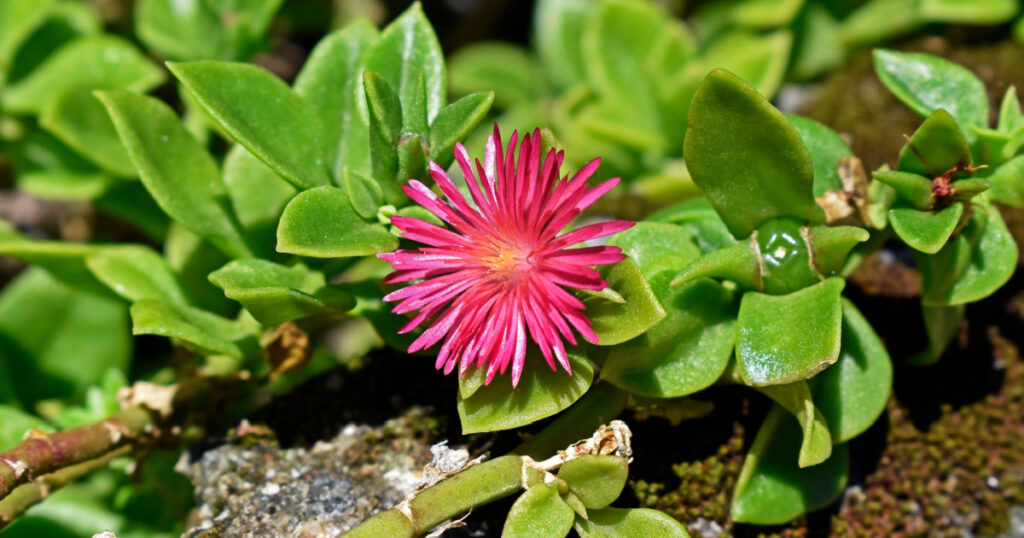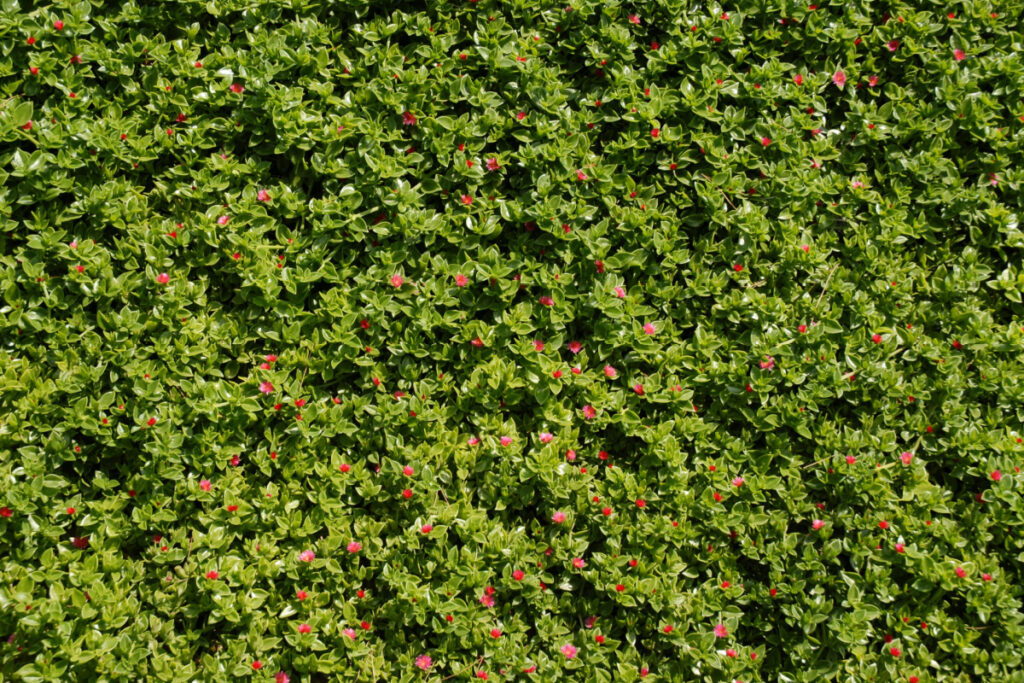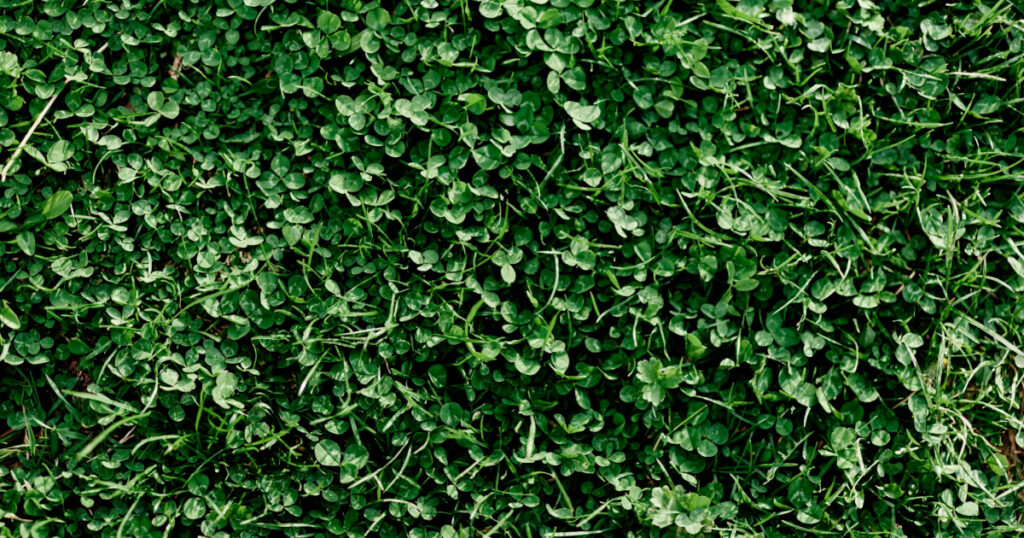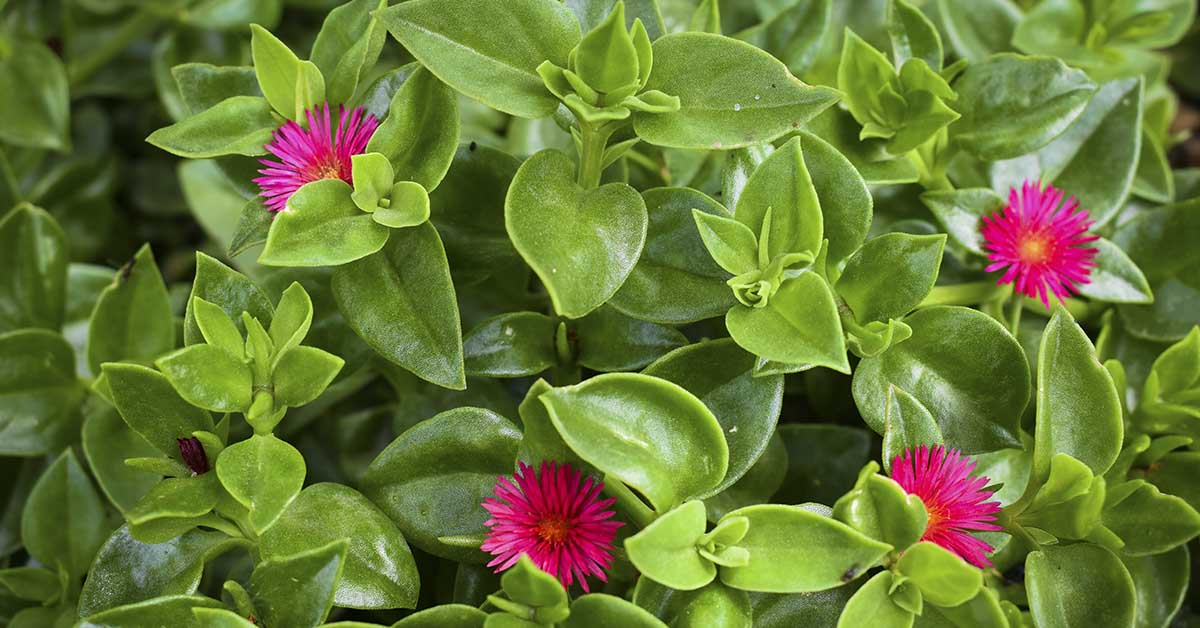In recent times, a growing movement has sought eco-friendly and low-maintenance lawn replacement to typical grass. A prime contender in this shift towards sustainable landscaping is Apetina, also known as Aptenia cordifolia or Baby Sunrose.1 This resilient and attractive ground cover offers a host of benefits for both urban and suburban landscapes, with its compact size, vibrant foliage, and adaptability to various growing conditions.
A Low-Growing Lawn Replacement

Apetina boasts vibrant inch-long dark green foliage and stunning bright red, aster-like flowers. Its adaptability makes it ideal for hanging baskets and ground cover in small, well-drained gardens. With glossy foliage that glistens in the sun, this plant forms a lush backdrop for its year-round 3/4-inch blossoms. Its low stature, typically reaching only 3 to 4 inches in height, makes it an excellent choice for ornamental gardens and small landscapes.
Baby sunrose thrives in hanging baskets with well-drained soil. This resilient plant, while perfect for small gardens, also makes an exceptional ground cover, especially in combination with upright grasses or grass-like plants, creating a beautiful contrast. However, be mindful to plant Apetina in full sun, and once established, keep the soil moderately dry to prevent root rot.

Apetina excels in coastal landscapes, where windy conditions and sandy soil promote dry soil, making it the perfect choice for regions near the sea. With minimal irrigation needed for established plants, Apetina is a low-maintenance choice for gardens that require little intervention.
The low-growing and lush appearance of Apetina lends itself well to filling spaces among other plants in the garden. Its dark green, glossy foliage is a versatile complement to simple, upright companion plants with light or medium green foliage. It also pairs beautifully with various flower colors, particularly bright and light hues that stand out against its dark green backdrop.
Be cautious not to overwater Apetina, as excessively moist soil can lead to root rot, causing poor growth and potentially leading to chlorosis and plant death.
While Apetina exhibits remarkable qualities, it’s not the only traditional grass lawn replacement.2 Let’s explore a few more ground cover options as we move toward more sustainable and low-maintenance landscaping.
Read: 8 Gardening Hacks That Will Help Flowers, Veggies, And Fruit Flourish
11 Other Grass Alternative Ground Covers

Moss:
Moss lawns offer a green, low-maintenance solution that requires no mowing or fertilizing. Moss prefers compacted, acidic, and nutrient-poor soils and can be transplanted successfully if you prepare the area properly.3
Blue Star Creeper:
Standing at a mere 4 inches tall, Blue Star Creeper is an excellent no-mow lawn replacement to traditional ones. It can withstand foot traffic and forms a dense mat with pale blue star-shaped flowers.
Corsican Mint:
Corsican Mint is a versatile stepable plant that releases a pleasant scent when walked on. It’s adaptable to various conditions and bears dainty white blooms in the spring.
Creeping Wire Vine:
Creeping Wire Vine is a hardy ground cover with glossy green leaves. It’s a great choice for steppable areas and can tolerate sunny or partially shaded locations.
Veronica ‘Waterperry Blue’:
Veronica ‘Waterperry Blue’ is a tough, stepable plant with round, lavender-blue flowers. It’s perfect as a lawn replacement and can thrive in full sun or partial shade.
Creeping Jenny:
Creeping Jenny, also known as Moneywort, is a versatile creeping perennial suitable for replacing traditional lawns. It’s ideal for slopes and rocky terrain, with round leaves that come in green or golden varieties.
Bugleweed (Ajuga Reptans):
Bugleweed forms a carpet-like ground cover that can tolerate foot traffic and grows well in dry shade. It features tiny purple flowers in spring and autumn.
Green-and-Gold:
Green-and-gold is a native perennial ground cover suitable for shady slopes or woodland edges. It spreads by rhizomes and produces small, yellow, daisy-like blossoms in spring.
Barren Strawberry:
Barren Strawberry is an ornamental strawberry-like plant that covers the ground with glossy foliage and bright yellow spring flowers. Its stature and growing style make it a perfect lawn replacement to plant.
Clover and Microclover:
Clover, especially white Dutch clover, makes an ideal turfgrass substitute and greens up your lawn by drawing in nitrogen. Microclover is a softer and fully walkable variety that stands up to occasional mowing and crowds out weeds.
Fescue:
Fine fescue is a drought-tolerant and no-mow grass variety that forms a lush green carpet. It’s suitable for full sun or partial shade and inhibits weed growth, making it a sustainable lawn replacement.
Considering these alternatives, it’s clear that Apetina’s versatility and resilience place it among the top contenders for a lawn replacement. Whether you choose Apetina or one of the other ground covers, switching to a more eco-friendly and low-maintenance lawn alternative is a step towards a greener future for your landscape.4
Keep Reading: Natural Organisms in Soil Can Power Lights With This Bio Battery, Which May Be World’s Most Disruptive Technology
Sources
- “APTENIA CORDIFOLIA BABY SUNROSE.” IFAS. Edward F. Gilman, Ryan W. Klein, and Gail Hansen
- “5 Purposeful Groundcovers.” The Gardener
- “Grass Alternatives: 12 Low-Maintenance Lawn Replacements.” Almanac. Robin Sweetser. June 5, 2023.
- “THE BEST GROUNDCOVERS TO USE AS LAWN REPLACEMENTS.” Garden and Home. Madison Moulton. February 11, 2023.

